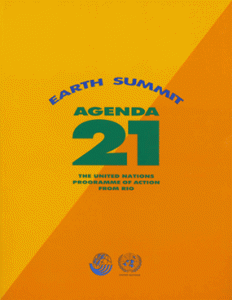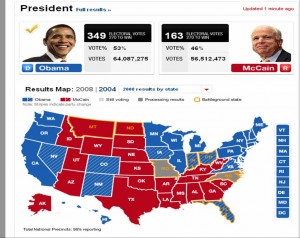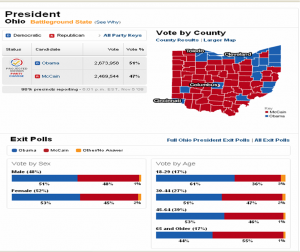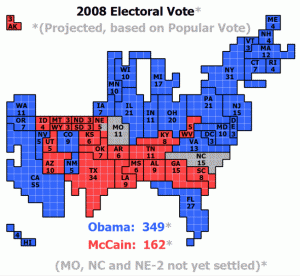President-elect Obama & his team have a pretty firm grasp on technology it seems, with particularly exciting interest in opening government to transparency on the web. This is pretty exciting stuff. See how he has articulated the problems facing the US and technology leadership:
The Problem
We need to connect citizens with each other to engage them more fully and directly in solving the problems that face us. We must use all available technologies and methods to open up the federal government, creating a new level of transparency to change the way business is conducted in Washington and giving Americans the chance to participate in government deliberations and decision-making in ways that were not possible only a few years ago.
America risks being left behind in the global economy: Revolutionary advances in information technology, biotechnology, nanotechnology and other fields are reshaping the global economy. Without renewed efforts, the United States risks losing leadership in science, technology and innovation. As a share of the Gross Domestic Product, American federal investment in the physical sciences and engineering research has dropped by half since 1970.
Too many Americans are not prepared to participate in a 21st century economy: A recent international study found that U.S. students perform lower on scientific assessments than students in 16 other economically developed nations, and lower than 20 economically developed nations in math performance. Only one-third of middle class physical science teachers are qualified to teach in that subject, and only one-half of middle school math sciences have educational background in that subject area. [more…]
Among the the solutions proposed, here are a few of the headings:
- Protect the Openness of the Internet
- Encourage Diversity in Media Ownership
- Safeguard our Right to Privacy
- Open Up Government to its Citizens
- Bring Government into the 21st Century
It goes on. I have not read in detail, but just about everything I have read I applaud. What actually happens is a different matter, but at least there is a vision outlined, and specific policies, almost all of which I cheer loudly.
Compared with the sad state of tech leadership in Canada. I could not even find a true technology platform from the Harper’s Conservatives (I’ve emailed his office to ask, but could someone point me to one?). Here’s the best thing I found, a grocery list of tech investments.
Conservatives invest in cutting-edge computer research
Prime Minister Stephen Harper reiterated his promise that a re-elected Conservative Government will invest in scientific research and development to help create jobs and to help Canada reach its potential to be a world leader in science and technology.
“Our government has invested over $9 billion in scientific research and development to create the next generation of well-paying, high-tech jobs,” the Prime Minister said.
Today, the Prime Minister announced that a re-elected Conservative Government will provide a $50-million grant to the Institute of Quantum Computing, located at the University of Waterloo. The Institute is a world leader in research and teaching in the field of quantum information, a discipline that could lead to new technologies and new jobs.
Since 2006, the Conservative Government has invested in a variety of leading-edge science and technology projects last year, including:
* $510 million to the Canadian Foundation for Innovation to support the modernization of Canada’s research infrastructure.
* $350 million to support leading Centres of Excellence in Commercialization and Research.
* An additional $100 million to Genome Canada for research and technology.
* Funding for research on key priorities, such as health sciences, energy, information and communications. [more…]
The Problem: Canada does not have a technology strategy.







Comments on Posts